Saracen's Head
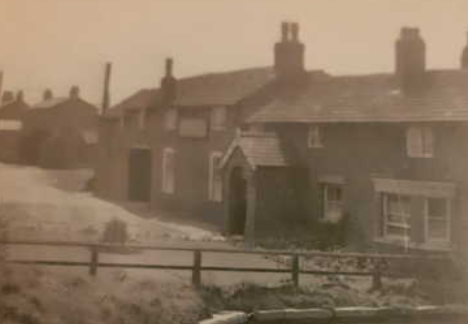
The very first pubs to appear in Britain were Roman taverns – serving alcohol and food. Later on, the taverns that had been granted licence to host travelling guests in their rooms, were called inns. Inns were usually located along highways or in the countryside such as the Saracen’s Head, The White Horse and the Scarisbrick Arms in Halsall. Taverns would be more central to towns and villages.

By the mid 17th century, most of these terms had virtually disappeared and ‘public house’ or ‘pub’ for short, came into use. ‘Public house’ was the chosen name as it distinguished pubs from private residences. The public house we now know as the Saracen’s Head grew from a private cottage on the edge of the canal that had been providing refreshment to the labourers, farmers, navvies and residents of Halsall. John Cotterall, in his book ‘Halsall, a village built on a rock’ mentioned Thomas Sephton being the innkeeper of the ‘Saracen’s Head’ in 1820.
In 1830, the Beerhouse Act was passed in England which allowed any householder to brew and sell beer or cider in their home for the price of 2 guineas – this is approximately £190 in today’s money. Beerhouses served beer from jugs or directly from the barrel that would have been tapped and placed on a table in the corner. It was easy to obtain a licence and very profitable, so much so that public houses became very popular – according to Marstons, the number of beerhouses increased from 400 in the first year of the Act being passed to 46,000 only eight years later! In 1869, new licensing laws were introduced in an effort to control this growth.
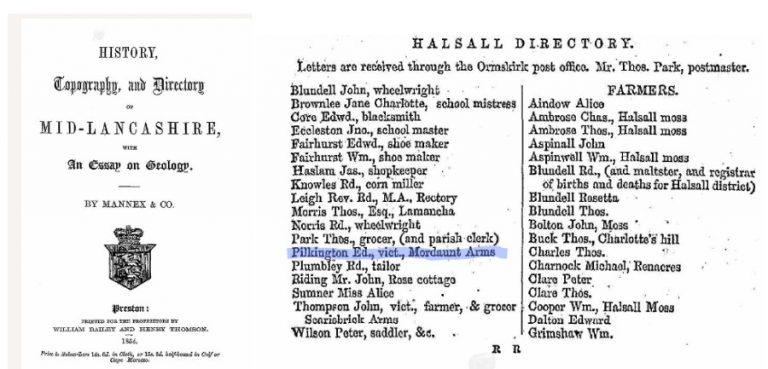
In 1854, according to the Mannex & Co. Directory, the inn by the Warehouse Bridge was called the Mordaunt Arms presumably after Charles Lewis Mordaunt, JP (1729-1808) KFR4-41P who lived at Halsall Hall and owned Halsall Cotton Mill. The directory shows Edward Pilkington as innkeeper at the Mordaunt Arms in 1854.
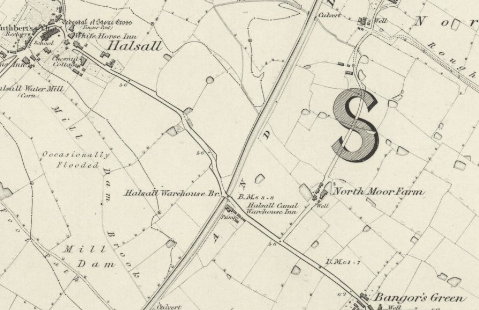
It wasn’t until the 1871 census that the name Saracen’s Head appeared. Before this it was referred to as ‘Bridge Inn’, ‘Mr. Pilkington’s house’ or ‘Mr. Hesketh’s house’ for example. On the 1847 OS map of Halsall, it is titled ‘The Warehouse Inn’ (named after the bridge crossing the canal).
The Saracen’s Head obtained its first licence in 1872.

List of the Innkeepers at each Census
| Census | Biography | Birth to Death | Occupation | FamilySearch Family Tree |
|---|---|---|---|---|
| 1841 | Edward Pilkington | 1811-1886 | Farmer/Innkeeper | MHW2-LFQ |
| 1851 | Edward Pilkington | 1811-1886 | Farmer/Innkeeper | MHW2-LFQ |
| 1861 | James Pilkington | 1810-1882 | Innkeeper | MH4J-Z96 |
| 1871 | James Hesketh | 1836-1911 | Innkeeper | GJ3C-67R |
| 1881 | James Hesketh | 1836-1911 | Innkeeper | GJ3C-67R |
| 1891 | Robert Jones | 1848-1923 | Master Mariner / Innkeeper | GJ3Z-HQ2 |
| 1901 | Robert Jones | 1848-1913 | Master Mariner / Innkeeper | GJ3Z-HQ2 |
| 1911 | Margery Littlewood | 1855-1913 | Innkeeper | KFGZ-T9J |
| 1921 | John Kenyon | 1887-1978 | Innkeeper/Farmer | GJGH-97N |
| 1939 | Hugh Sharrock | 1877-1963 | Innkeeper | KK9K-C73 |
| Other publicans in intervening years, not recorded on the Census | ||||
| Abraham Knowles | 1861-1934 | KJGM-11S | ||
| William Littlewood | 1860-1906 | LRR8-WL8 | ||
| Henry Bennett | 1851-1915 | GXCV-GF8 | ||
The term ‘public house’ meant just that but it wasn’t merely the selling of beer that occurred! Inquests, christmas balls and meetings of the Oddfellows and the Homeguard, to name just a few events, were also held in the Saracen’s Head. The following pages will outline some of these occurrences through the years – as printed in the Ormskirk Advertiser at the time.
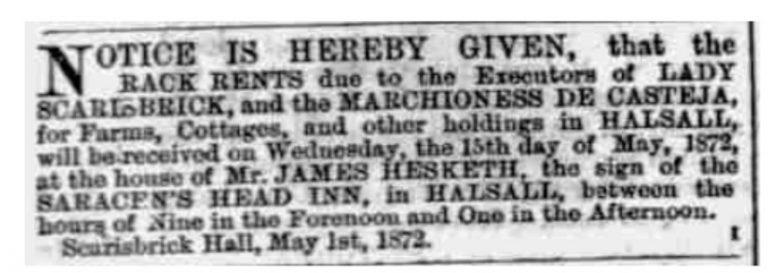

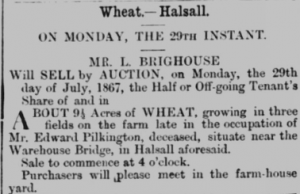
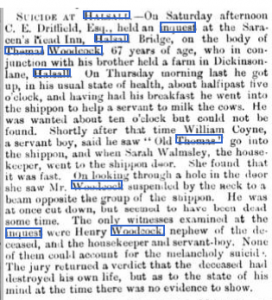
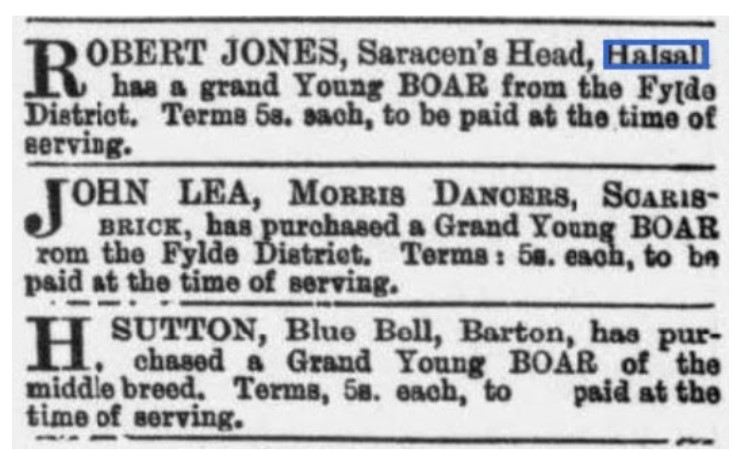
As a sideline, Robert Jones, as did many other publicans including his neighbour, Harry Sutton at the Blue Bell owned a boar to make some extra income – see the advertisement which appeared in the Ormskirk Advertiser on 5th October 1899.